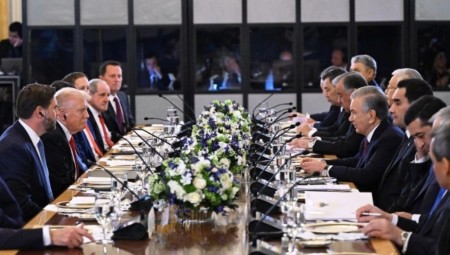Remittances to low- and middle-income countries are projected to have grown a strong 7.3 percent to reach $589 billion in 2021. This return to growth is more robust than earlier estimates and follows the resilience of flows in 2020 when remittances declined by only 1.7 percent despite a severe global recession due to COVID-19, according to estimates from the World Bank’s Migration and Development Brief released today.
For a second consecutive year, remittance flows to low- and middle-income countries (excluding China) are expected to surpass the sum of foreign direct investment (FDI) and overseas development assistance (ODA). This underscores the importance of remittances in providing a critical lifeline by supporting household spending on essential items such as food, health, and education during periods of economic hardship in migrants’ countries of origin.
“Remittance flows from migrants have greatly complemented government cash transfer programs to support families suffering economic hardships during the COVID-19 crisis. Facilitating the flow of remittances to provide relief to strained household budgets should be a key component of government policies to support a global recovery from the pandemic,” said Michal Rutkowski, World Bank Global Director for Social Protection and Jobs.
Factors contributing to the strong growth in remittance are migrants’ determination to support their families in times of need, aided by economic recovery in Europe and the United States which in turn was supported by the fiscal stimulus and employment support programs. In the Gulf Cooperation Council (GCC) countries and Russia, the recovery of outward remittances was also facilitated by stronger oil prices and the resulting pickup in economic activity.
Remittances registered strong growth in most regions. Flows increased by 21.6 percent in Latin America and the Caribbean, 9.7 percent in Middle East and North Africa, 8 percent in South Asia, 6.2 percent in Sub-Saharan Africa, and 5.3 percent in Europe and Central Asia. In East Asia and the Pacific, remittances fell by 4 percent - though excluding China, remittances registered a gain of 1.4 percent in the region. In Latin America and the Caribbean, growth was exceptionally strong due to economic recovery in the United States and additional factors, including migrants’ responses to natural disasters in their countries of origin and remittances sent from home countries to migrants in transit.
The cost of sending $200 across international borders continued to be too high, averaging 6.4 percent of the amount transferred in the first quarter of 2021, according to the World Bank’s Remittance Prices Worldwide Database. This is more than double the Sustainable Development Goal target of 3 percent by 2030. It is most expensive to send money to Sub-Saharan Africa (8 percent) and lowest in South Asia (4.6 percent). Data reveal that costs tend to be higher when remittances are sent through banks than through digital channels or through money transmitters offering cash-to-cash services.
“The immediate impact of the crisis on remittance flows was very deep. The surprising pace of recovery is welcome news. To keep remittances flowing, especially through digital channels, providing access to bank accounts for migrants and remittance service providers remains a key requirement. Policy responses also must continue to be inclusive of migrants especially in the areas of access to vaccines and protection from underpayment,” said Dilip Ratha, lead author of the Brief and head of KNOMAD.
Remittances are projected to continue to grow by 2.6 percent in 2022 in line with global macroeconomic forecasts. A resurgence of COVID-19 cases and reimposition of mobility restrictions poses the biggest downside risk to the outlook for global growth, employment and remittance flows to developing countries. The rollback of fiscal stimulus and employment-support programs, as economies recover, may also dampen remittance flows.
Regional Remittance Trends
After falling 8.6 percent in 2020, remittance flows to Europe and Central Asia are projected to have grown 5.3 percent to $67 billion in 2021 due to stronger economic activity in the European Union and surging energy prices. Remittances are projected to grow by 3.8 percent in 2022.
Remittances are currently the largest source of external financing in the region. Inflows have been higher or equal to the sum of FDI, portfolio investment, and ODA in 2020 and 2021. As a share of GDP, remittances in the Kyrgyz Republic and Tajikistan stand above 25 percent. It is estimated that in 2021 the volume of money remitted by labor migrants to Uzbekistan will reach about $7.6 billion, or 11.6 percent of the country's GDP.
Remittance costs: The average cost of sending $200 to the region rose slightly to 6.6 percent in the first quarter of 2021 from 6.5 percent a year earlier, largely reflecting a sharp increase in costs in the Turkey-Bulgaria corridor. Russia is one of the lowest-cost senders globally with costs falling from 1.8 percent to 1 percent.















